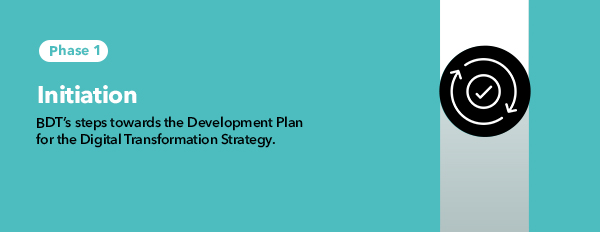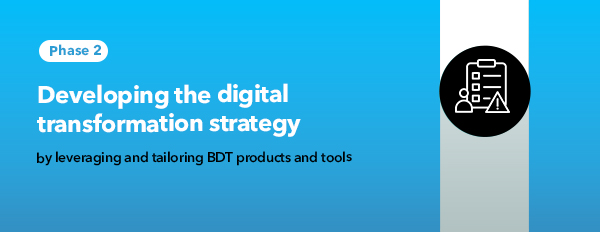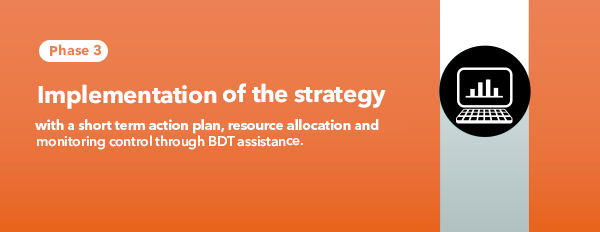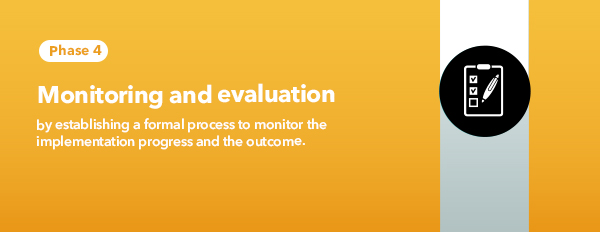
Background
Despite global advancements, many countries face persistent gaps in digital infrastructure, affordability, and skills, hindering progress toward inclusive growth and the Sustainable Development of digital transformation. BDT has developed a framework and strategic approach to support countries in accelerating digital transformation, through a strategic four-phase engagement process towards implementation and monitoring, leveraging from ITU-D priorities and enablers, BDT areas of work, and modalities, ensuring no one is left behind. Together, our team in headquarters and in regional offices work with members to bridge the digital and skills divide and drive digital transformation to leverage the power of ICTs. Our expertise is driven by ITU-D priority topics adopted at the WTDC.
Download the ITU-D Digital Transformation Framework document in PDF format
BDT’s strategic approach to implementing digital transformation
The BDT team in headquarters and in regional offices work together with members to bridge the digital and skills divide and drive digital transformation to leverage the power of ICTs. Our expertise is driven by ITU-D priority topics adopted at the WTDC. The engagement process towards implementation includes four phases:

Phase 1: InitiationUpon receipt of a request from a country, BDT proceeds to: assess the country request, assess the digital landscape according to BDT’s data sources, engage with the country to explain ITU-D’s strategy on digital transformation, and present the suggested modality for engagement/support to the development of the national digital transformation strategy. In parallel, BDT can support countries in identifying political support, identifying the local authority, identifying stakeholders to be involved, establishing a governance structure, and in planning the development of the strategy. BDT and the country then agree on the proposed implementation. | |

Phase 2: Developing the digital transformation strategyBDT provides technical assistance and tailors the strategy to the country needs, leveraging BDT products and tools, working with the country to ensure coherence, conduct a strategic analysis, indicate strategic priorities, articulate a shared vision, determine KPIs and expected outcomes, create a roadmap and workplan, define monitoring and evaluation framework, and define a governance framework. The strategy is co-designed through multi-stakeholder consultations, aligning with frameworks like the UN SDGs or regional initiatives (e.g., EU Digital Decade).
|

Phase 3: ImplementationBDT provides technical assistance to implement the approach, working closely with the country to develop and implement a short-term action plan, carefully planning the allocation of human and financial resources for implementation, and identifying operational monitoring and control. BDT assists in drafting annual implementation plans with sector-specific targets (e.g., health, education). This includes mobilizing resources through inter alia ITU’s Connect2Recover initiative for infrastructure projects or the Digital Skills Toolkit for workforce training. | |

Phase 4: Monitoring and evaluationThis is an iterative impact analysis, during and after the assistance, in line with the modality used, to gather lessons learned and practices to be reused for future endeavors. This includes capturing the outcomes and providing updated status at the country level. BDT conducts regular reviews using predefined metrics (e.g., ITU’s Digital Development Index) to measure socio-economic impact, such as GDP growth linked to digital adoption. Lessons learned are documented in case studies (e.g., collaborative regulation country reviews) and shared via ITU’s Digital Regulation Platform. |